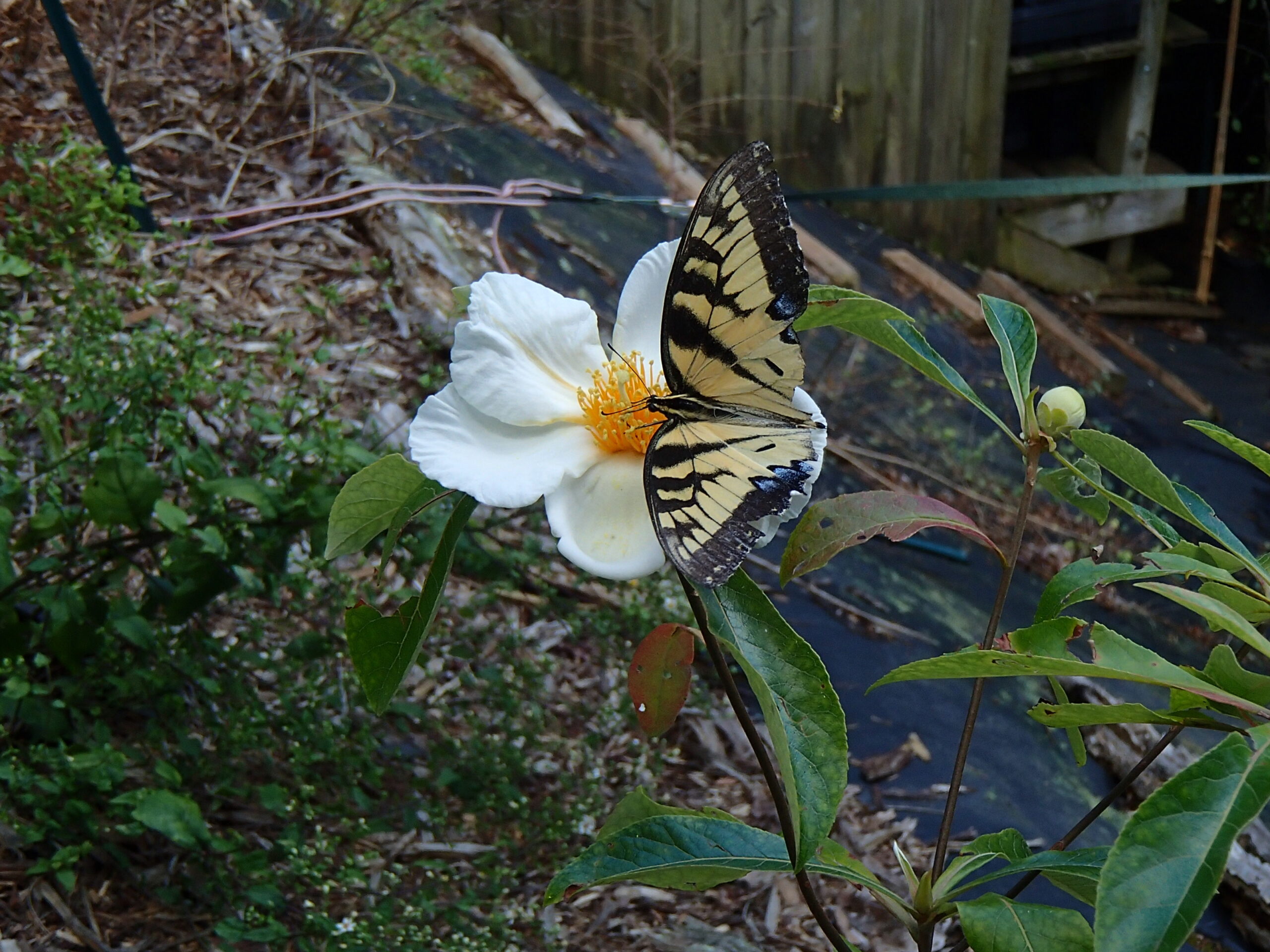NURSERY HOURS
Wednesday: 10-4 Thursday: 10-6 Friday-Saturday: 10-4 Sunday: 12-4
August 2, 2021
Aronia prunifolia
Aronia prunifolia or Purple Chokeberry is a natural hybrid between A. arbutifolia (Red Chokeberry), and A. melanocarpa (Black Chokeberry), a more mountainous species. All three Chokeberries have very diferent distribution maps. Purple Chokeberry is much less abundant than the Red Chokeberry. It is much like Red Chokeberry in habit, that is,…
April 29, 2019
Franklinia alatamaha
One reason the Ben Franklin tree is grown is because it is attractive: fragrant, 3-inch flowers with delicate white petals and thick, bushy golden stamens, and foliage that is handsome, with outstanding fall coloration (red, purple, orange). But mostly it is grown because it is rare and has a great story.…
February 28, 2019
Viburnum rufidulum
Rusty Blackhaw is one of our Southern woodland viburnums whose range is central and southeastern U.S. In NC it occurs mostly in piedmont and coastal plain counties. It is a deciduous, dense, showy, highly arching understory shrub or small tree. Mature height is about 18′, but can be taller if grown…
September 17, 2018
Ilex vomitoria ‘Taylor’s Rudolph’
‘Taylor’s Rudolph’ is a cultivar of a beautiful and hardy native species of Holly that grows in coastal NC as well as other Southeastern states. Both ‘Taylor’s Rudolph’ and the species are evergreen; both are very adaptable, thriving in a range of cultural conditions from moist to dry, in full sun…
September 17, 2018
Kalmia latifolia L.
Many people know Mountain Laurel as a stunning native shrub which is a spectacular sight in our mountains in May and June, but many don’t realize that it also grows in rocky floodplains of our rivers in the piedmont. Since we collect our seed from natural stands on the Haw River,…
September 17, 2018
Fothergilla gardenii
Dwarf Fothergilla is a marvelous, slow-growing, deciduous shrub typically about three feet tall at maturity. In nature it is found in bogs (pocosins) and moist lowlands and savannahs in coastal areas of the Southeast from North Carolina to the Florida panhandle and Alabama. The soft, white bottle brush inflorescences are strongly…
September 17, 2018
Hypericum stragulum
In spite of its intimidating scientific appellation, St. Andrew’s Cross is a humble little “subshrub”, one that is not found elsewhere in the trade. It occurs in dry woods from Long Island south and over to Texas and Oklahoma. We are very fond of it as it volunteers along paths inside…
September 17, 2018
Ilex opaca
American Holly is a slow-growing, medium sized, evergreen tree known and loved throughout the mid-atlantic, south-central and Gulf state lowlands (in NC, is reported in most counties throughout). An understory tree in our deciduous forests, it generally reaches 40 to 60 feet, with pyramidal form, occasionally much taller. In cultivation, however,…
September 17, 2018
Ilex vomitoria ‘Schilling’s Dwarf’
This cultivar of Yaupon Holly, fully embraced by the nursery trade like few other native plants, is very popular as a foundation plant around homes and office buildings and it functions admirably in this role.’Schiling’s Dwarf’ is included in our inventory specifically for those who want a formal hedge, but with…
September 17, 2018
Carex pensylvanica
Carex pensylvanica, or Oak Sedge (or Pennsylvania Sedge) is found in dry woods mostly in Northeastern U.S. In North Carolina it occurs naturally in the mountain counties. This is one of the more popular sedges for gardeners and landscapers in our area because of its versatility. Plants are about 8 inches…
September 17, 2018
Cladrastis kentukea
In North Carolina, Yellowwood is found only in a few of our western-most counties bordering Tennessee, and is among the rarest of our native trees. It is thirty to fifty feet high and nearly that wide at maturity and is prized as an ornamental for its form, for its smooth, Beech-like…
September 17, 2018
Aronia arbutifolia
Red Chokeberry is a charming, multi-stemmed, deciduous woody shrub native to Atlantic and Southeastern states. It is found in swamps and wet places, and is therefore very useful for wet areas, but is happy in upland gardens as well and established plants even tolerate drought. This shrub is hard to beat…
About the author

Proin volutpat vitae libero at tincidunt. Maecenas sapien lectus, vehicula vel euismod sed
Categories
Popular Posts
Instagram
Follow us


















